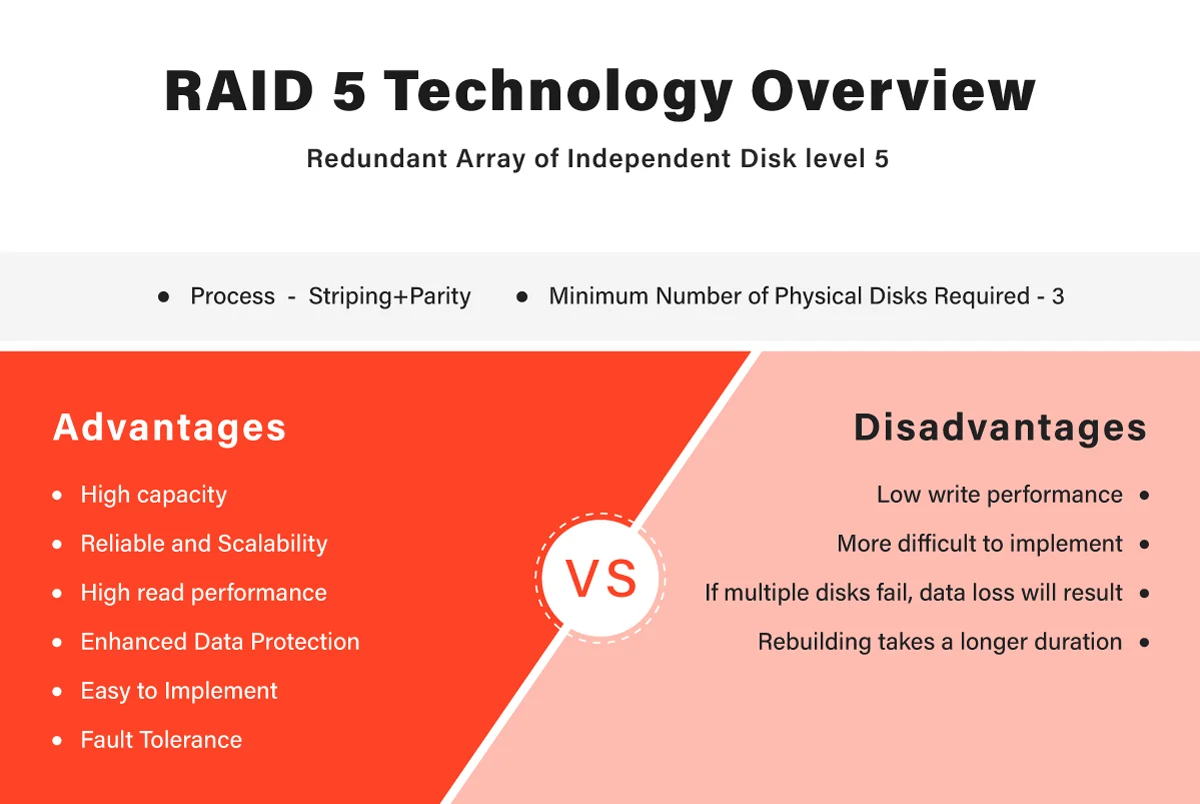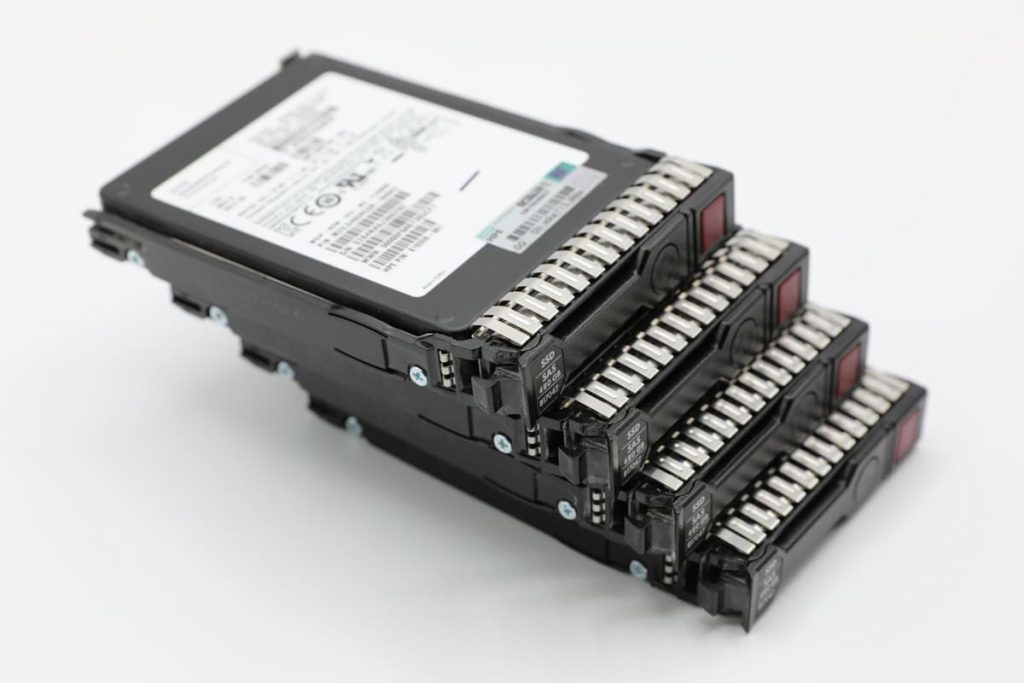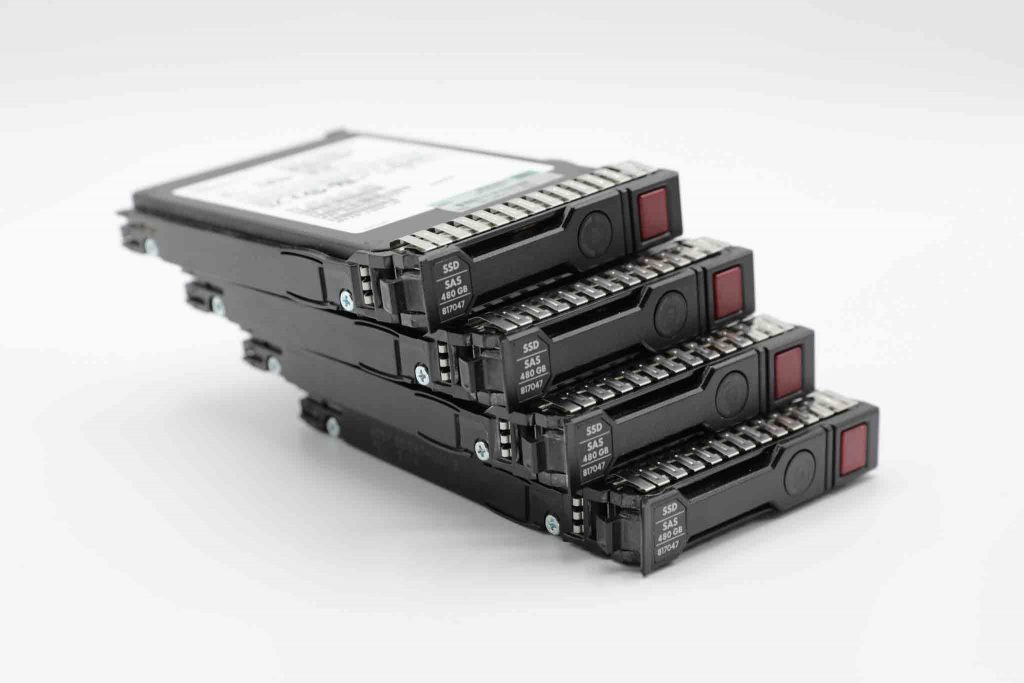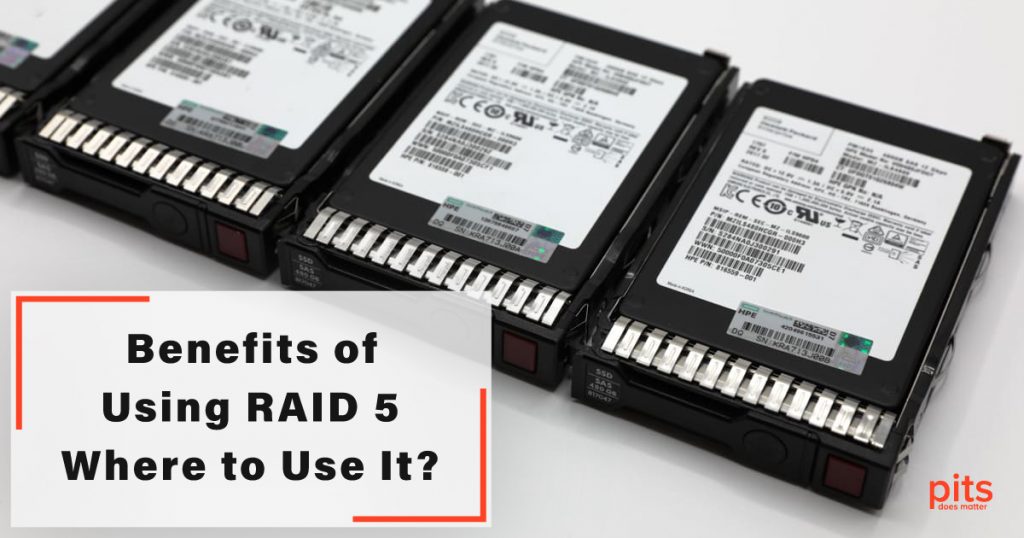RAID 5 is a popular data storage solution offering numerous benefits for businesses and individuals. By distributing data across multiple drives, RAID 5 offers improved performance, increased storage capacity, and enhanced data protection. In this article, our team will explore the requirements for using RAID 5 and examine some of the key benefits of this technology.
RAID 5 Requirements - How Many Disks for RAID 5
In RAID 5, the minimum drive amount is equal to three, although more can be added for increased capacity. These drives should be identical in terms of size, read speed, and manufacturer. While it is technically possible to use drives of different sizes, it is generally recommended to use devices that are the same size or larger than the smallest drive in the array. This ensures that the maximum amount of storage space is available.

Another important consideration when setting up RAID array 5 is the type of interface that your drives use. Most modern storage devices use either SATA or SAS interfaces, and it is important to ensure your RAID controller supports the same interface as your hard disk drives. In addition, it is important to choose a RAID controller that is compatible with your operating system.
With our online RAID 5 calculator, you can select the right amount of drives for your array.
Where to Use Array RAID 5
RAID 5 is a versatile storage solution that can be used in a wide range of applications. Some of the most common uses for RAID 5 include:
- File Servers. RAID 5 is an excellent choice for file servers, where data protection and performance are both important. By distributing data across multiple drives, RAID 5 offers faster access times and increased fault tolerance.
- Databases. RAID 5 is well-suited for database applications, where large amounts of data must be stored and accessed quickly. With RAID 5, databases can be spread across multiple drives, allowing faster read and write speeds.
- Multimedia Applications. By distributing data across multiple drives, RAID 5 can provide faster read and write speeds than a single drive. RAID 5 is ideal for multimedia applications such as video editing, where large files must be accessed quickly and reliably.
How Does RAID 5 Work
- Improved Performance. By distributing data across multiple drives, RAID 5 can provide faster read and write speeds than a single drive. This is because data can be accessed from numerous devices simultaneously, reducing the time it takes to read or write large files.

- Increased Storage Capacity. With a Redundant Array of Independent Disks, you can combine multiple drives into a single array, which provides increased storage capacity. This means you can store more data without purchasing additional drives.
- Enhanced Data Protection. The most important benefit of RAID 5 is its ability to protect data against drive failure. With RAID 5, data is distributed across multiple drives, which means that if one drive fails, the data can be rebuilt using the data on the other drives.
Fault Tolerance. RAID 5 provides fault tolerance, which means that even if one drive fails, the data on the other drives can still be accessed. This is because the data on each drive is divided into blocks, and each block is distributed across multiple disks. This means that if one drive fails, the data can still be accessed from the other drives.
- Easy to Implement. RAID 5 is easy to implement, as it requires only a compatible RAID controller and identical drives. Once these requirements are met, setting up RAID 5 is a straightforward process that most users can complete.
- Scalability. RAID 5 is also scalable, which means that additional drives can be added to the array as needed. This allows businesses and individuals to expand their storage capacity as their needs grow without replacing existing hardware.
Data Loss on RAID Level 5
While RAID 5 is a robust and reliable data storage solution, it is not immune to data loss. There are several common causes of data loss on RAID 5, including:
Multiple Drive Failures
While RAID 5 provides fault tolerance, it can only withstand the failure of a single drive. If numerous drives fail simultaneously or within a short period, data loss can result. This is because RAID 5 requires at least three devices. If more than one drive fails, the data can rarely be recovered.
Controller Failure
The RAID controller manages the storage array and ensures data is distributed across multiple drives. If the controller fails, data loss or corruption can result.
Human Error
Human error is one of the most common causes of data loss on any storage system, including RAID 5. Accidental deletion, formatting, or overwriting of data can result in the loss of critical information.
Power Surges and Outages
Power surges and outages can cause data loss or corruption on RAID 5 systems. This is because sudden power loss can cause the RAID controller to stop functioning properly, or data may be in the process of being written to the drives at the time of the power outage.
Natural Disasters
Natural disasters such as floods, earthquakes, and fires can cause physical damage to the drives or the storage array, resulting in data loss.

Software Corruption
Software corruption can occur for various reasons, such as viruses, malware, or operating system failures. This can cause data loss or corruption on RAID 5 systems and, in some cases, may require rebuilding the entire storage array.
Hardware Failure
Hardware failure can occur for various reasons, such as overheating, mechanical failure, or aging components. If the drives or other hardware components fail, data loss can occur on the RAID 5 system.
Data Retrieval for RAID Level 5
We offer comprehensive RAID data recovery services for various RAID arrays, including RAID 5 arrays. Our experienced engineers have the latest tools to recover data from all RAID arrays, including those with multiple drive failures or other complex issues.
Our RAID data recovery process begins with a thorough evaluation of the damaged RAID 5 array, which allows us to determine the cause of the data loss and develop an appropriate strategy. Our engineers recover data from RAID using a combination of specialized hardware repairs and manual techniques.
We understand the importance of time in the data recovery, especially for businesses and organizations that rely heavily on their data. That is why we offer emergency RAID data recovery services, with 8-48 hours turnaround times, to help minimize downtime and get our clients’ systems back up and running as quickly as possible.
Advantages of Our RAID 5 Data Recovery Services

If you’re facing a data loss situation, don’t hesitate to contact us. Our 24/7 data recovery services are available to you, 365 days a year. Let us help you recover your precious data today.

We start the recovery process with a risk-free evaluation. Our technicians estimate reasons for data loss and the level of damage. Based on it, we select the most suitable recovery strategy.

With years in the data recovery industry, our company supports the highest customer satisfaction rate. We do everything to provide a positive experience for our clients.

During our remote customer file verification session, you will thoroughly review all necessary documents and records to ensure accuracy and compliance.

We offer data recovery services from over 50 locations across the US. This means that no matter where you are located, you can access our services to recover the data.

With our certified data recovery services and 99% success rate, we are confident that we can recover your precious data and get you back up and running in no time.
At PITS Global Data Recovery Services, we understand that every data recovery situation is unique. Our engineers take a customized approach to each recovery project to ensure the best possible outcome. The team at PITS is committed to providing our clients with reliable and efficient RAID data recovery services, focusing on exceptional customer service and communication throughout the recovery process.
Get in touch with us today for RAID 5 recovery by filling in the form below.
Frequently Asked Questions
What is RAID 5?
RAID 5 is a data storage technique that combines multiple hard drives to provide fault tolerance, increased performance, and data protection. It uses a parity block that allows the system to reconstruct data in case one drive fails.
What are the benefits of using RAID 5?
The benefits of using RAID 5 include increased data protection, fault tolerance, and performance. RAID 5 provides a level of redundancy that ensures that data is protected and available even if one drive fails. Additionally, it provides improved read and write performance due to data being spread across multiple drives.
How many hard drives do I need for RAID 5?
RAID 5 requires a minimum of three hard drives, but it can be expanded to include more drives for increased storage capacity and performance.
What happens if multiple drives fail in a RAID 5 array?
If multiple drives fail in a RAID 5 array, it can result in data loss. While RAID 5 provides fault tolerance for one drive failure, it’s not designed to handle multiple drive failures. To protect against this, it’s recommended to use a higher level of RAID, such as RAID 6 or RAID 10, or implement other backup and recovery solutions.
